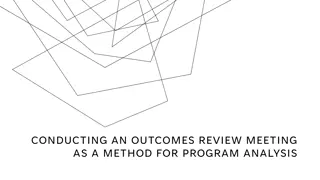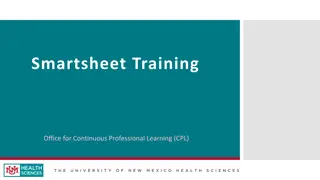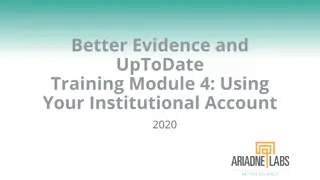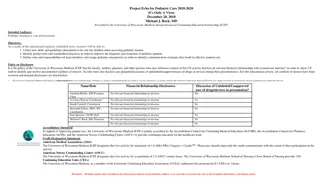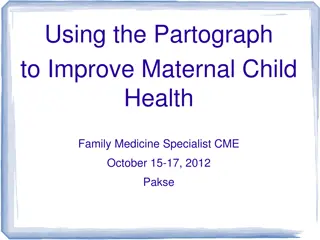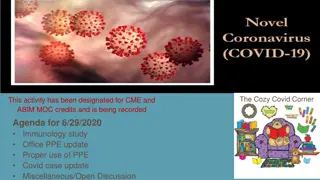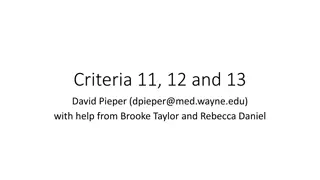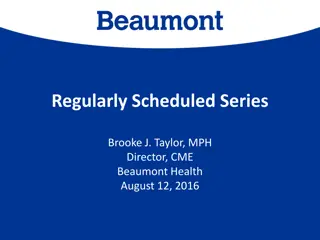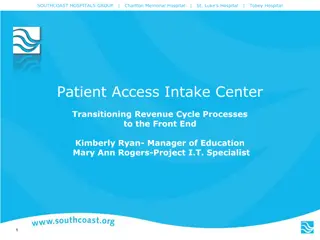
Perioperative Management at Kacheliba Sub-County Hospital
Explore the adapted perioperative management protocols at Kacheliba Sub-County Hospital, focusing on C-section indications, pre-operative preparations, perioperative risks, interventions during C/S, and anesthesia options to ensure safe patient care.
Download Presentation

Please find below an Image/Link to download the presentation.
The content on the website is provided AS IS for your information and personal use only. It may not be sold, licensed, or shared on other websites without obtaining consent from the author. If you encounter any issues during the download, it is possible that the publisher has removed the file from their server.
You are allowed to download the files provided on this website for personal or commercial use, subject to the condition that they are used lawfully. All files are the property of their respective owners.
The content on the website is provided AS IS for your information and personal use only. It may not be sold, licensed, or shared on other websites without obtaining consent from the author.
E N D
Presentation Transcript
EDIT This presentation about perioperative management was adapted for the resources available at Kacheliba Sub-County Hospital and prepared for staff from all professions.
CME on CME on perioperative perioperative managemant managemant Focus post-op care and C/S Dr Siri Maartensson Kacheliba Sub-County Hospital 26/09/23
C-section indications Planned/elective, e.g: Breech Placenta previae Several previous C/S (vaginal delivery possible after only one previous C/S!) Emergency, e.g: Obstructed labour Uterine rupture Placental abruption Chord prolapse Fetal distress I.e > Mother at risk or child at risk
Pre-operative preparations At least 1 i.v cannulae Risk of bleeding blood group and crossmatch. FHG. 6 hours fasting decrease risk of aspiration Hygien precautions - shower, new clothes/bedsheet is possible Urinary catheter empty bladder for easier surgical access and to avoid bladder damage Describe procedure to patient! M.O arranges consent form Pre-op ceftriaxone + flagyl iv to be given 30 min before surgery Pre-operative fluid bolus to avoid hypotension with spinal anaesthesia
Perioperative risks with C-section Large abdominal surgery. Risk of damage to bladder/bowel Complications with anaesthesia, both spinal and general Hemorrhage
During C/S Constant monitoring of vital signs Often spinal anaesthesia much safer, mother awake Emergency C/S sometimes need for general anaesthesia. High risk of aspiration because of pregnancy and labour. Difficult airway. Up to 1000 ml bleeding normal
Spinal anaesthesia Bolus injection local anesthetic and opioid in intrathecal space Analgesia and paralysis for 1-4 hours Low blood pressure common side effect fluid bolus, vasopressors
General anaesthesia Need for airway protection and ventilator assist In C/S always endotracheal intubation to protect from aspiration Intravenous induction, inhaled gas for maintenance Possible respiratory complications, e.g postop pneumonia
Post-operative risks after C/S Hemorrhage Thrombosis increased risk with pregnancy, surgery, immobilized Wound infection, wound rupture Pneumonia especially if general anaesthesia If spinal - risk of post-puncture headache. Absent while lying down, increases in upright position (leakage of spinal fluid). Treat with analgesia, fluids. Child higher risk of respiratory failure and breast feeding difficulties. Increased risk of uterine rupture with multiple C/S
Early post-operative phase Monitor vital signs (BP, pulse, SaO2) every 15 min first hour, then every 30 min until patient can move legs (if spinal) Continously palpate uterus, monitor for P/V bleeding Antibiotics to be given? Continue i.v fluids as prescribed (depending on hemorrhage), monitor urine output. Encourage oral intake after 2 hours if stable. Important to avoid dehydration.
Analgesia (pain relief) Adequate pain relief is very important! Analgesia facilitates mobilization reduced risk of thrombosis, pneumonia Easier to take deep breaths and cough reduced risk pneumonia Patient care! Paracetamol, dicofenac (if not major hemorrhage), opioids (tramadol or morphine monitor baby!). Regularly for the first days.
Post-operative care ctd. Encourage patient to be ambulatory reduced risk thrombosis and pneumonia! Sit up after spinal effect is gone, stand up same day. Repeat several times per day. Prevent constipation - especially if opioid treatment treat with e.g lactulose, encourage water intake. Urinary catheter removed as soon as possible, usually after 8 hours, depending on patient and surgery. Encourage and explain benefits of KMC (skin-to-skin) with baby! Stimulates baby s growth, prevents hypothermia and infection Stimulates breastmilk production
Post-op ctd. No heavy lifts first weeks will need assistance at home with daily work! Full recovery at least 4-6 weeks Patient will come for post-op check up after approx. 1 week Encourage patient to come back if signs of infection (fever, wound infection/rupture, P/V discharge) or bleeding Encourage family planning

